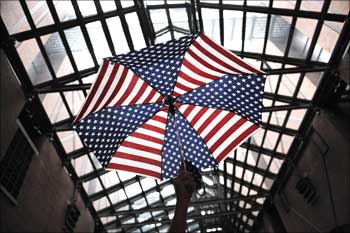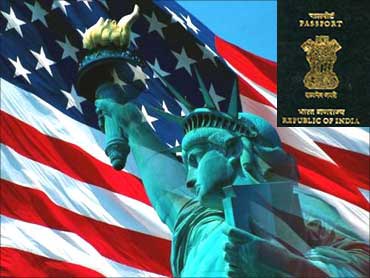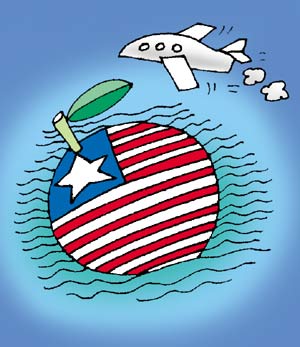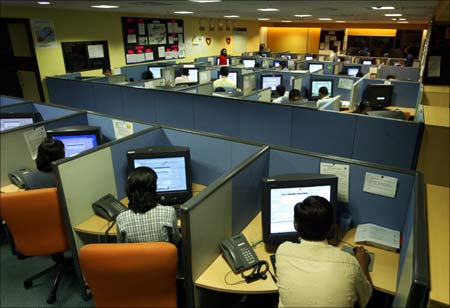This article was first published 14 years ago
Home »
Business » Indian IT firms to see rise in H-1B, L-1 visa holders
Indian IT firms to see rise in H-1B, L-1 visa holders
Last updated on: February 8, 2011 18:29 IST
Image: More H-1B and L-1 visa holders.
Despite the rise in visa application fee and increasing pressure from the US to hire more locally, the number of H-1B and L-1 visa holders at most of the top Indian information technology firms are expected to increase further.
IT companies are seen deploying more people on-site with the rise in business volumes which has also prompted most of them to apply for higher number of visa in the 2010-11 financial year.

Image: Infosys had a higher number of H-1B and L-1 visa holders.
India's second largest IT services firm, Infosys Technologies, for example, said the company had a higher number of H-1B and L-1 visa holders at the end of 2010 compared to the figure registered in the beginning of the year.
At the end of the December 2010, approximately 9,300 of Infosys' employees in the US held H-1B visa and approximately 2,300 were on L-1 visa. As of March 31, it had 8,900 H-1B visa holders and 1,800 L-1 visa holders.

Image: More people working on projects on-site.
"The number of visa holders depends on the approval process and growth in the business. Since business has grown in the last 12 months, there are more people working on projects on-site," said T V Mohandas Pai, board member and director of HR and Administration, Infosys Technologies.
According to sources in the company, the number of fresh visa applications from Infosys this year is expected to be more than the previous year.

Image: TCS has 1,500 visas.
Similarly, India's largest IT services firm TCS, which initially planned to apply for 700 H-1B visas for the current financial year, finally ended up applying for 1,500 visas.
The increase in the number of visa holders by Indian IT companies could be a short to medium-term strategy which is expected to continue till they manage to hire sizable local people in the US, say analysts.

Image: More workers go abroad.
"Indian IT companies are, of course concerned about the visa application fee increase and other developments in the US. They want to hire locally, but it will take at least two-three years for most Indian IT firms to have a meaningful presence. In the interim, they are ensuring business as usual by sending more people from India for their on-site works," said Amneet Singh, VP (Global Sourcing), Everest Group. In the long-term, their reliance on H-1B and L-1 visas are expected to come down, he said.

Image: Application fee hiked for fresh H-1B.
Effective from last August, the US Citizenship and Immigration Services (USCIS) announced an increase in the application fee of fresh H-1B and visa application by $2,000, much against the interest of the Indian IT firms.

Image: Fee hike has less impact.
The fee rise was expected to have an impact of less than 0.5 per cent on their topline. With this, Indian IT firms were also expected to reduce their number of fresh visa applications filings.
However, towards the end of January, the USCIS announced it received sufficient number of H-1B petitions to reach the statutory cap for this year, which was 65,000.
The fee rise was expected to have an impact of less than 0.5 per cent on their topline. With this, Indian IT firms were also expected to reduce their number of fresh visa applications filings.
However, towards the end of January, the USCIS announced it received sufficient number of H-1B petitions to reach the statutory cap for this year, which was 65,000.

Source:







